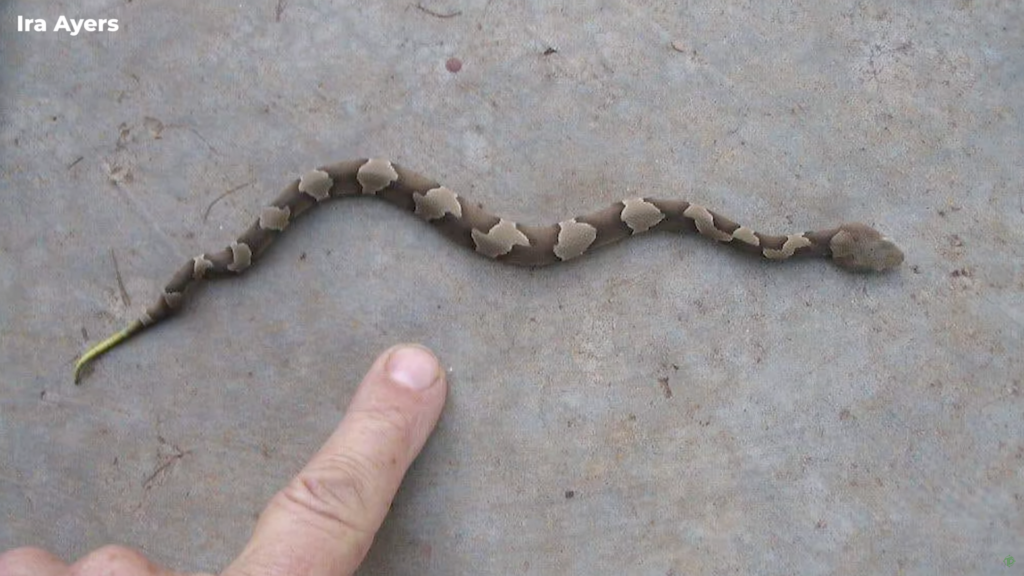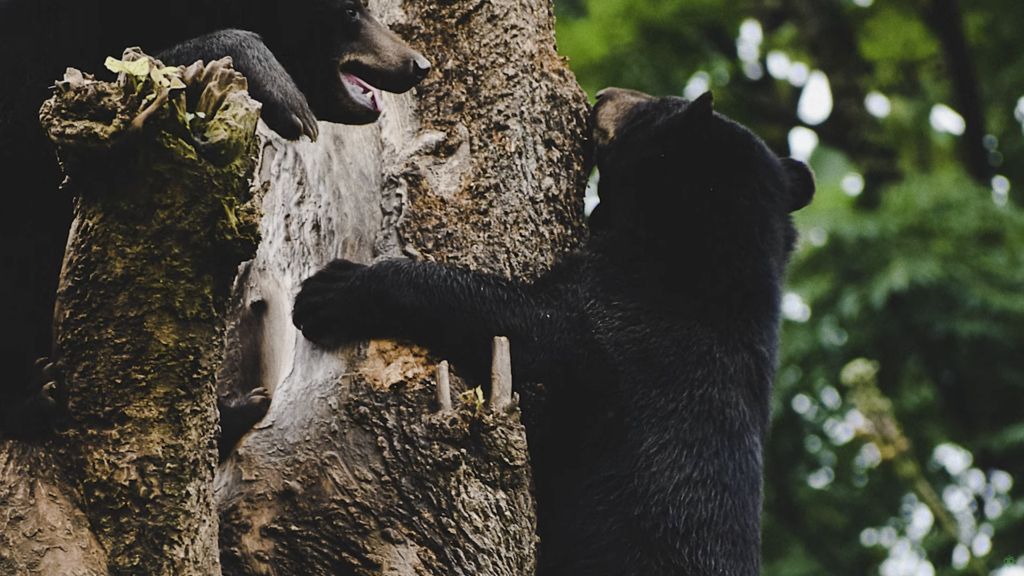The Best Deals on Camping, Backpacking and Outdoor Gear [June 2025]
Watch this video directly on YouTube.
When it comes to the outdoors, there are a lot of myths about animals’ survival, navigation, and more that people have perpetuated for years, sometimes decades. Like, for example, when people in Fayetteville, Arkansas, who have clearly never left the state say that the city is just like Austin, Texas. I’ve lived in both places, okay? It’s really not. Anyway, it’s the same with these 10 outdoors-oriented myths. One person says one slightly incorrect thing one time, and everybody feels like they have to repeat it. So, we’re gonna straighten some things out right here, right now, so you’re not spreading outdoor myths the next time someone asks you about bear bells.
10 Outdoor Myths

1. You can navigate in the woods because moss grows on the north side of trees.
Nope, incorrect. Well, I mean, sure, moss can and does grow on the north side of trees, but it also frequently grows on the south side, the west side, and yes, sometimes even on the east side. Because here’s the thing: moss grows wherever the heck it’s cool, and in a shady wood, that could literally be anywhere. The myth does stem from the fact that in the northern hemisphere, there’s typically more direct sunlight on the south side of trees than anywhere else, so the cooler, shady side of the tree would be on the north, which is where moss is more likely to grow. And while that might occasionally be the case, please don’t leave your map at home and trust moss to direct you. Moss is a lying sack of crap. It’ll steal your car stereo when you’re not looking. Don’t trust moss.

2. People with uteruses shouldn’t go backpacking on their period because they’ll attract bears.
You absolutely can and maybe even should go backpacking when you’re on your period (learn tips and tricks for doing so comfortably in this post) because, no, you will not attract bears. There’s absolutely zero data to back this up. Food attracts bears, though. So, store anything that smells in a bear canister or bear locker when you’re camping in bear country, whether you’re on your period or not.
And if you’re unfamiliar with either of those things–bear canisters or lockers–you should probably take our Backpacking 101 Course over on YouTube.

3. You can identify a venomous snake by its triangular head.
Wrong again. While, yes, many venomous snakes in North America and beyond do have triangular heads, especially those in the pit viper family, just because the snake doesn’t have a triangular head doesn’t mean it’s not venomous. Take the adorable little coral snake, for example. Sweet little colorful guy, no triangular head, absolutely venomous. So, the best course of action is to keep distance between you and any and all snakes, unless you can positively identify them as non-venomous. Even then, keep your distance. They’re wild animals, and they just want to be left alone. Just definitely don’t try to relocate one out of your campground if you aren’t absolutely sure it’s not venomous. And yes, the word is venomous, not poisonous. Poisonous means you eat it and it kills you. Venomous means it bites you and injects venom, which can kill you. (Learn more about animal safety, read this post.)

4. Baby venomous snakes and scorpions are more deadly.
Nope. However, this is one of those outdoor myths that is at least rooted in some science. Baby venomous snakes do have more toxic venom, but because they’re so small, as are their venom glands, they can’t inject nearly as much of it as a large adult can and will. And small snakes, just like larger ones, can control how much venom they inject. Contrary to popular belief, as for scorpions, well, that one’s a little harder to confirm or deny, but because they’re smaller, they have less to inject, and that’s what matters. Also, scorpions in the U.S. are rarely deadly, so stop freaking out so much. I mean, it’s still gonna hurt like a mother, and you should definitely be careful around them, but don’t be more scared of babies, okay?

5. It has to be below freezing to get hypothermia.
Yeah, this one’s definitely not true. In fact, you can suffer from hypothermia at temps well above freezing, especially if you’re wet or in water, especially if that water is at or below about 68 degrees Fahrenheit. That’s because water just sucks the heat right out of your body about 24 times faster than air, which means temps don’t have to be as cold, and you don’t have to be as exposed for as long. So just bring appropriate layers for whatever temperature you’re recreating in, okay? And be extra careful around water. Know the signs of hypothermia and how to treat it, even if you’re not planning a winter backpacking trip.

6. Bears can’t climb trees.
Yup, it’s another bear myth. There are a lot of them, okay? Although, frankly, anyone who saw “Cocaine Bear” is probably aware that this one’s a myth. Hollywood doesn’t lie, right? Well, it is a myth because bears definitely can climb trees. Black bears especially are super good at it. So don’t climb a tree if you’re trying to get away from a bear, okay? Here’s what you should do instead (you’re gonna want to watch this one…It involves a bear onesie).

7. If you get bitten by a snake, you should suck out the venom.
No, no, no, no. Don’t do that. And don’t get one of those venom extraction kits to do the sucking for you either. Not only does it not work, it’s dangerous. And don’t put a battery on it or tie a tourniquet above the bite or any of the other things that you’ve heard of. None of them work. The only remedy for a venomous snake bite is antivenom. So, get yourself to the nearest hospital, and they’ll take care of you if you did indeed get a dangerous dose of venom.

8. Holding it when you’re tent camping makes you colder.
Come on, you know what I’m talking about. You’ve almost definitely heard people say that when you’re camping, if you have to pee, you should just go because holding it will make you colder, since your body has to work harder to keep all that extra fluid warm. I myself believed this one for some time until a very rational urologist pointed out that that is all nonsense. Your body is about 98.6 degrees, meaning your bladder is 98.6 degrees, meaning the urine inside your bladder is 98.6 degrees, meaning your body doesn’t have to work harder to keep anything warm. It’s all the same temperature. But yes, you should just get out of your tent and go. I know it’s the worst, getting out of a cozy sleeping bag, but it’s not like you’re gonna go back to sleep when your bladder is at capacity. So just go, get it over with, and go back to sleep.

9. If water in the backcountry looks clean and clear, it’s safe to drink.
Nope, not even kinda. Because even when water looks crystal clear and perfect, there’s almost definitely bacteria, viruses, and/or protozoa lurking in natural water sources. And those things can make you super duper sick. So unless you found the source of a natural spring, you better freaking treat your water before you start sipping. Here’s an article that highlights a few rad bottles and other ways to filter and purify water, but your best bet is to filter and purify using a backcountry filter and water purification tabs. You don’t always need both, but they rid the water of different things. Better safe than sorry, right? Or do you enjoy getting giardia and suffering through bouts of explosive diarrhea?

10. You should use bear bells when you hike to keep bears at bay.
Now, I get this one, I really do. You’re probably aware that it’s a good idea to talk or sing while you’re hiking in bear country so you don’t surprise a bear when you round a bend in the trail. That’s excellent advice, and you should do it. So, common sense might kindly imply that other noise-making apparatus work the same way, i.e., bear bells. However, there are no studies that suggest that bear bells work. Some experts say they might work in some areas where bears aren’t familiar with humans, so any unfamiliar sound could be enough to encourage them to vacate the premises. But that’s a lot of ifs. Most experts think they’re a silly waste of money, don’t work to scare away bears, and you should just stick to talking or singing because that definitely works.
Bottom Line
Outdoor myths are often wide spread and easily believed. After all, many of them are rooted in semi-truths. But don’t believe everything you hear about how to stay safe in the woods. Instead, fact-check questionable beliefs, put your critical thinking cap on, learn how to actually protect yourself out there, and wander on.
